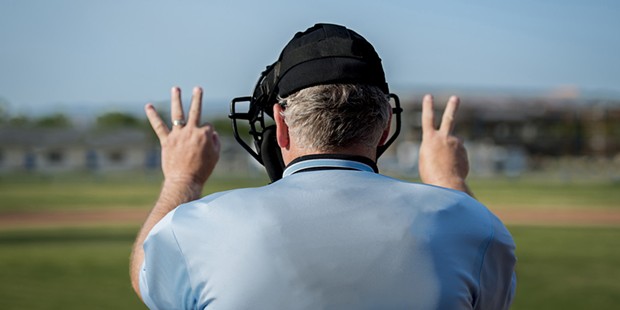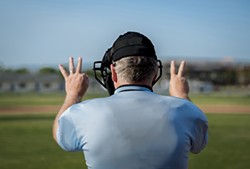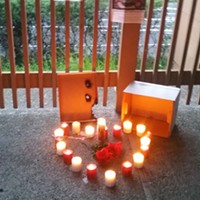[
{
"name": "Top Stories Video Pair",
"insertPoint": "7",
"component": "17087298",
"parentWrapperClass": "fdn-ads-inline-content-block",
"requiredCountToDisplay": "1"
}
]
Many painful questions will be asked after the killing of black Humboldt State University student leader David Josiah Lawson. Was the killing motivated by racism? Were the responses of first responders biased? Do people of color experience differential treatment in this often-described liberal community?
These are essential questions to ask and we must respond with sincere soul-searching and vigorous public dialogue. The worst response would be to shut down the discussion by insisting that race played no part.
Is it possible that someone can be racist and not know it?
Absolutely.
Racism is not always explicit like Ku Klux Klan terror. Racism comes in the form of slurs or jokes that suggest a person is a second-class citizen or unwelcome. But it is more often encountered as different treatment at a bank window or a hospital waiting room. Much of racism is systematic and institutional.
Think of white supremacy as racial team whose members have each other's backs. In job interviews or while grading papers, white supremacy would encourage white people to help out one group while disadvantaging everyone else.
Could someone act like a white supremacist and not even perceive it? Absolutely. Consider baseball umpires.
Professional home-plate umpires for Major League Baseball have to determine if pitches are strikes or balls with split second decision-making. Does race ever play into these high-speed decisions? Absolutely.
In These Times, a nonprofit magazine, explored this question examining racism and baseball pitchers. Its reporting cited Southern Methodist University a study that analyzed 3.5 million Major League Baseball pitches as measured by the QuesTec digital pitch monitoring system. The researchers found that home plate umpires called "disproportionately more strikes for pitchers of their same ethnic group."
More significantly, since the vast majority of Major League Baseball umpires are white, their subtle prejudice benefits white pitchers and disadvantages pitchers of color. White pitchers with a white umpire can throw balls that get counted as strikes and black pitchers with white umpires have to tighten up their strike zone, making their pitches easier to hit.
In these split second decisions, the study found that race plays a significant factor. Note that these are trained professionals whose decisions are being videotaped, scrutinized by fans and they still noticeably discriminate. The race of umpire and pitcher demonstrably changes the outcomes of baseball games.
So it is possible to be racist without intending it. It is possible to harm people with racism and not be explicit about it. Your friends might be the most generous people you can imagine and, yet, they may still act biased in favor of people who look like them.
The umpires are a good example of how racism can be understood as systematic. From Little League up to major leagues, you can't play baseball without an umpire. Every baseball player of color will encounter system-wide discrimination from the people who are the arbiters of fairness in the game.
Racist ideas might influence how we understand the world. If a person holds (perhaps unwittingly) prejudice against people of color, then that will shape how they see politics, threats and culture. To refuse to acknowledge this possibility covers up for this kind of harm. It discourages racists from self-reflection and insulates people who discriminate from accountability.
Researcher Carrie B. Fried created a study asking passersby to analyze the lyrics from a violent folk song, the Kingston Trio's "Bad Man's Blunder." Participants were told that the lyrics were either from a country song or a rap song.
When people were told the song was from a hip hop band the song was rated as more violent than when people were told that the same lyrics were from a country band. Simply changing the genre label of a song created a significantly more negative review even when the lyrics were identical.
The researcher notes that one possible reason for this difference is because rap music is widely associated with black people. Fried argues in her study that racial stereotypes are influential and largely un-observed.
It is inaccurate to claim that someone "doesn't have a racist bone in their body" or "couldn't be racist." But more importantly, this kind of communication says that you won't even entertain the possibility that someone might have experienced racism.
Suggesting that an incident couldn't have been motivated by racism is gaslighting people of color. Telling people of color that they didn't experience or didn't understand discrimination is paternalistic avoidance. This is why Arcata and Humboldt County have the dual reputation as both progressive and racist.
The people of Humboldt County have long assumed that their general friendliness and progressive politics mean that they cannot be racist. But people experience discrimination in this place and avoidance isn't helping.
Fighting discrimination and standing up for equality will take diligent work. To embody the kind of welcoming community that we proclaim, it is going to be necessary to do serious rethinking. Here are some initial suggestions:
Listen to the voices and experiences of people of color: It is possible that white people don't perceive discrimination. In order to see how racism works, we would need to acknowledge that people discriminate and listen to those who experience that discrimination.
Stop exclaiming that you know someone isn't racist: Learn to explain how this argument silences when it comes up among friends and peers.
Get used to uncomfortable conversations: People who have power and privilege on the North Coast are going to have to challenge stereotypes, jokes and racist anecdotes in all the spaces we inhabit. This includes all-white spaces, meaning that some well-meaning white people are going to have to break down what is problematic about racism in bars and apartments in Arcata.
The study of baseball pitches found that when umpires knew they were being watched (during a prominent game) their racial biases decreased. Knowing that other people are paying attention can subtly discourage discrimination.
Courageous people can make a difference here. The first step is simply refusing to silence the conversations about racism. After that, we can become better listeners and develop the capacity to challenge discrimination. But none of that is possible if we continue to deny that racism exists or proclaim that people we know and love can't be racist.
Comments (9)
Showing 1-9 of 9
more from the author
-
In Defense of the Occupation of Siemens Hall
- May 16, 2024
- More »
Latest in Views
Readers also liked…
-
Hope
- Sep 7, 2023
-
California Says No to Privatizing Medicare
- Sep 21, 2023


































